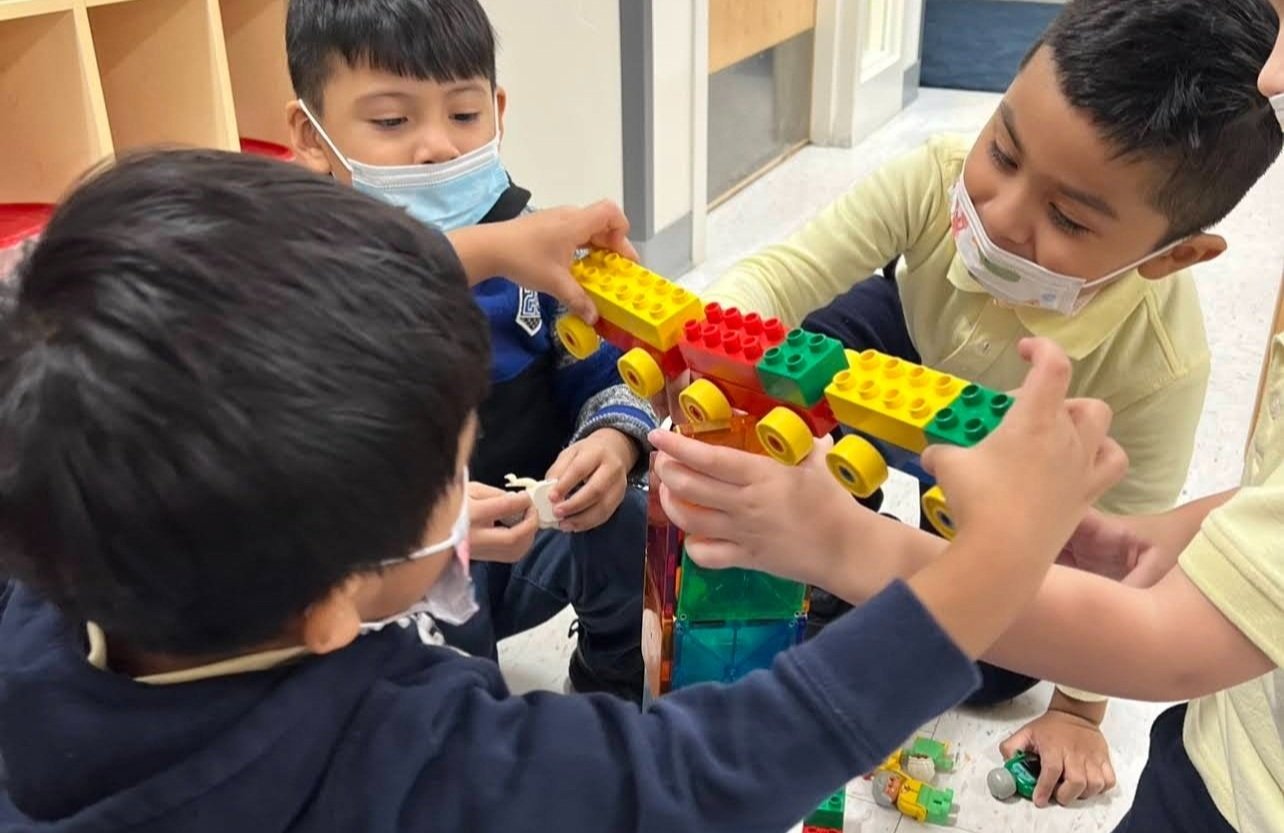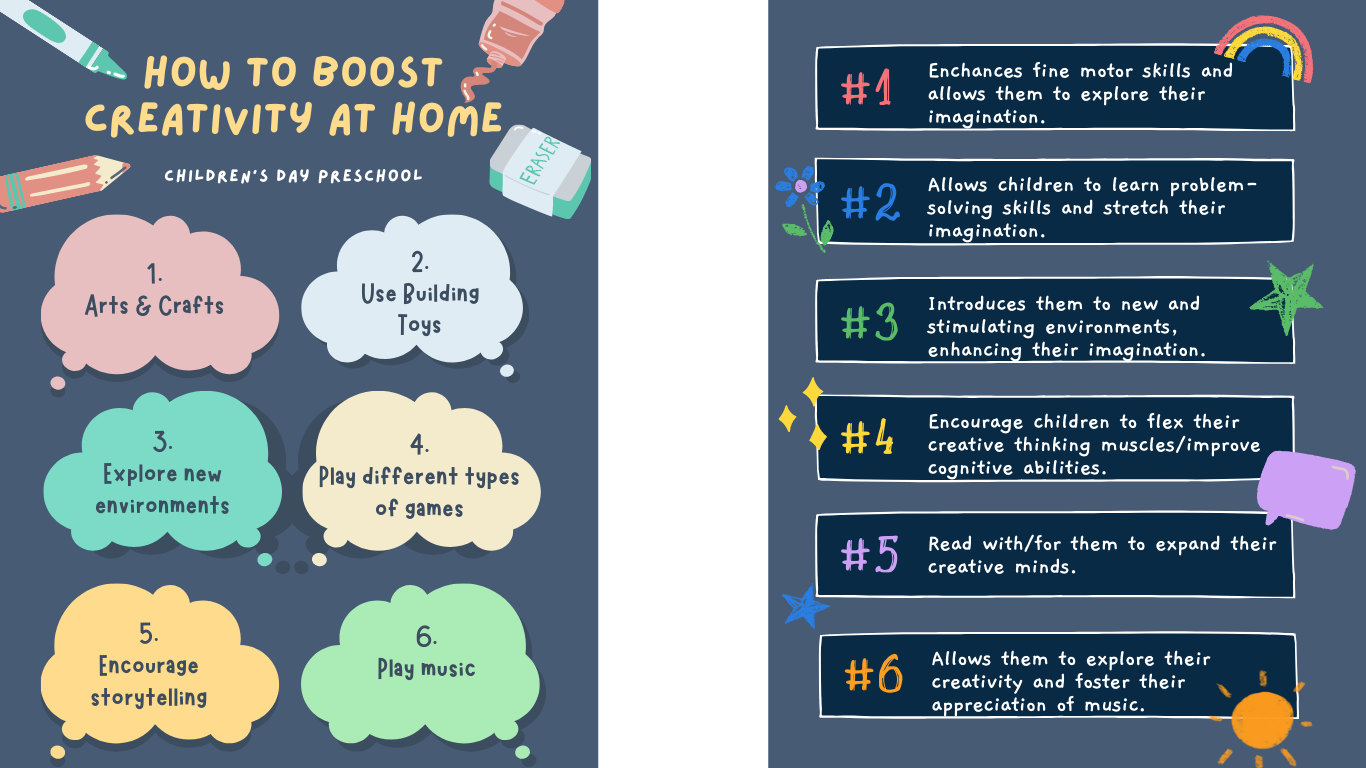How Creativity Boosts Children's Development
January is International Creativity Month!
Read on about the importance of encouraging the young ones in your life to have fun while developing creativity!
Childhood and Creativity seem to go hand in hand. Children have a natural ability to express themselves in new and unique ways in a variety of circumstances. Creativity is an essential ingredient in the learning process- and in life. It is the process of creating something new and different- the ability to look at and solve problems in a unique way. Nurturing a child’s creativity helps them to strengthen their confidence, language, self-expression, thinking/problem-solving skills, as well as express and cope with different feelings and strong emotions.
Nurturing your child’s creativity is as simple as providing open-ended toys (such as blocks, art material, pretend play items) and allowing them the freedom to direct their own play with these items.
How does Children’s Day Preschool actively nurture creative development? We use class activities, solo experimentation, encourage collaboration, and creative art expression to help each child enjoy developing their unique creative abilities. By providing these methods, we consistently see our students become more self-aware and achieve important developmental milestones!
A creative environment is essential for early development and helps prepare children for a successful future. During these early years, creative activities have a wide range of long-lasting benefits…greater physical wellness…emotional self-awareness and self-regulation…intellectual and social skills development.
Physical Development: Creativity helps build physical development. During creative play, children develop fine motor skills, control, and coordination. Using art tools, they develop their senses. It helps them learn about their surrounding environment and connect with objects they already know. When children use “tools” like crayons or markers, it helps them learn how to properly hold and control them. It also helps them develop preferences for which hand will become the “dominant” hand.
Emotional Development: Creative play promotes emotional development by integrating feelings with tasks. Children at this age are actively learning how to share their emotions verbally. They can use art to help them express their feelings while gaining confidence in their capabilities and raising self-esteem.
Intellectual Development: Problem-solving, critical thinking, and basic math skills can result from creative play. Applying their thoughts and reasoning skills to the physical world, children ask themselves questions like “Will the glue hold these objects together? If I cut something a certain size, will it fit? How can I stop the glue from dripping from my piece of paper? Developing solutions to these problems requires actively using critical thinking and problem-solving skills.
Social Development: While being socially active in a creative environment, children learn to share and interact with each other. Creative activities like singing, dancing, acting, and other forms of imaginative play help children grow and develop basic communication and social interaction skills.
At Children’s Day, Art Therapy services are administered by our registered, Board-Certified Art Therapist. Her strategies help our children strengthen their resilience, increase their social-emotional growth, learn tools for self-regulation, and further develop their creative abilities.
Not only do we provide helpful activities in school to aid in the progression of your child’s development, but we also provide activities online through our social media, newsletters, and even on informational blog posts like this! Be sure to follow us on social media for more great ideas.
Below you will find activities that aid in boosting children’s creativity from the comfort of your own home.





